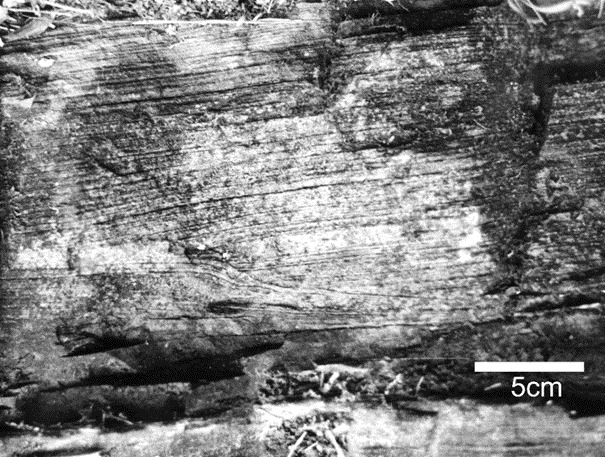Aoxi Fm
Type Locality and Naming
The type section of Aoxi Formation is the Aoxi-Paiji section, measured between Aoxi and Paiji villages in northwestern Hunan. The section lies about 5.5 km south of Qianling Town, the seat of Baojing County (109°39’E, 28°39’N). The section is also shared by the overlying Huaqiao Formation, and was measured by Hunan Regional Geological Survey Team in 1964. In the type section the formation is 552.4 m thick (Zhang, 1997). The Aoxi Formation was named by Hunan Regional Geological Survey Team (1965). The name is derived from Aoxi Village in Baojing County, Xiangxi Tujia-Miao Autonomous Prefecture, northwestern Hunan Province.
Synonym: (敖溪组)
Lithology and Thickness
The Aoxi Formation is a carbonate sequence with deposits of cinnabar (mercury-ore). It is divided into three lithologic intervals, from the bottom up: (1) grey to dark grey, medium- to thin-bedded laminated dolomite with interbeds of mid- to thick-bedded dolomite and black carbonaceous-argillaceous dolomite, which become platy shale after weathering (180 m thick); (2) dark grey, thin-bedded dolomite in the lower part and grey, medium- to thick-bedded calcareous dolomite and dolomite breccia (71.9 m); (3) light grey, thin-bedded, fine- to medium-grained or medium- to coarse-grained dolomite (300.5 m).
[Figure: Laminated dolomite in the upper part of Aoxi Formation, Wa’ergang section, Taoyuan, northwestern Hunan Province; note the truncation structure on the lower left of the image.]
Relationships and Distribution
Lower contact
The Aoxi Fm rests conformably on the underlying Chinghsutung Fm
Upper contact
It is conformably overlain by Huaqiao Fm
Regional extent
In western Hunan and eastern Guizhou provinces. The Aoxi Formation is exposed in the Jiangnan Slope Area of South China Region, distributed mainly in northwestern and western Hunan (Niuchehe, Taoyuan County; Tianping, Dayong County; Aoxi, Baojing County; Chatian and Jiudiantang, Fenghuang County) and eastern Guizhou (Dadongna, Tongren City; Yangping, Zhenyuan County) with thickness decreased considerably eastward, ranging from 600 to 187 m. In Baojing area the formation is about 500‒600 m thick; east of Tianping in the Dayong area, the thickness decreased to 421‒ 478 m; and further east in the Niuchehe area of Taoyuan it is only 241‒187 m thick.
GeoJSON
Fossils
The lower part of the formation contains trilobites Pagetia sp., Proasaphiscus sp., and Ptychoparia sp., brachiopod Nisuia sp. and sponge-spicule, with trilobite Ptychoparia sp. ranges up near the top of the formation. No other fossils known in the mid and upper parts in the type section. However, some trilobites are reported from other localities, including Kootenia sp., Olenoides sp., Kaotaia sp., Meitanella sp., Fuchouia sp., Dorypyge sp., Proasaphiscus sp., and Oryctocephalus sp. from the middle part; Hypagnostus nepos from the upper part.
Age
Depositional setting
Additional Information
In western Hunan and eastern Guizhou provinces, the Aoxi Formation contains rich cinnabars, forming the famous zone of mercury ore in China.
